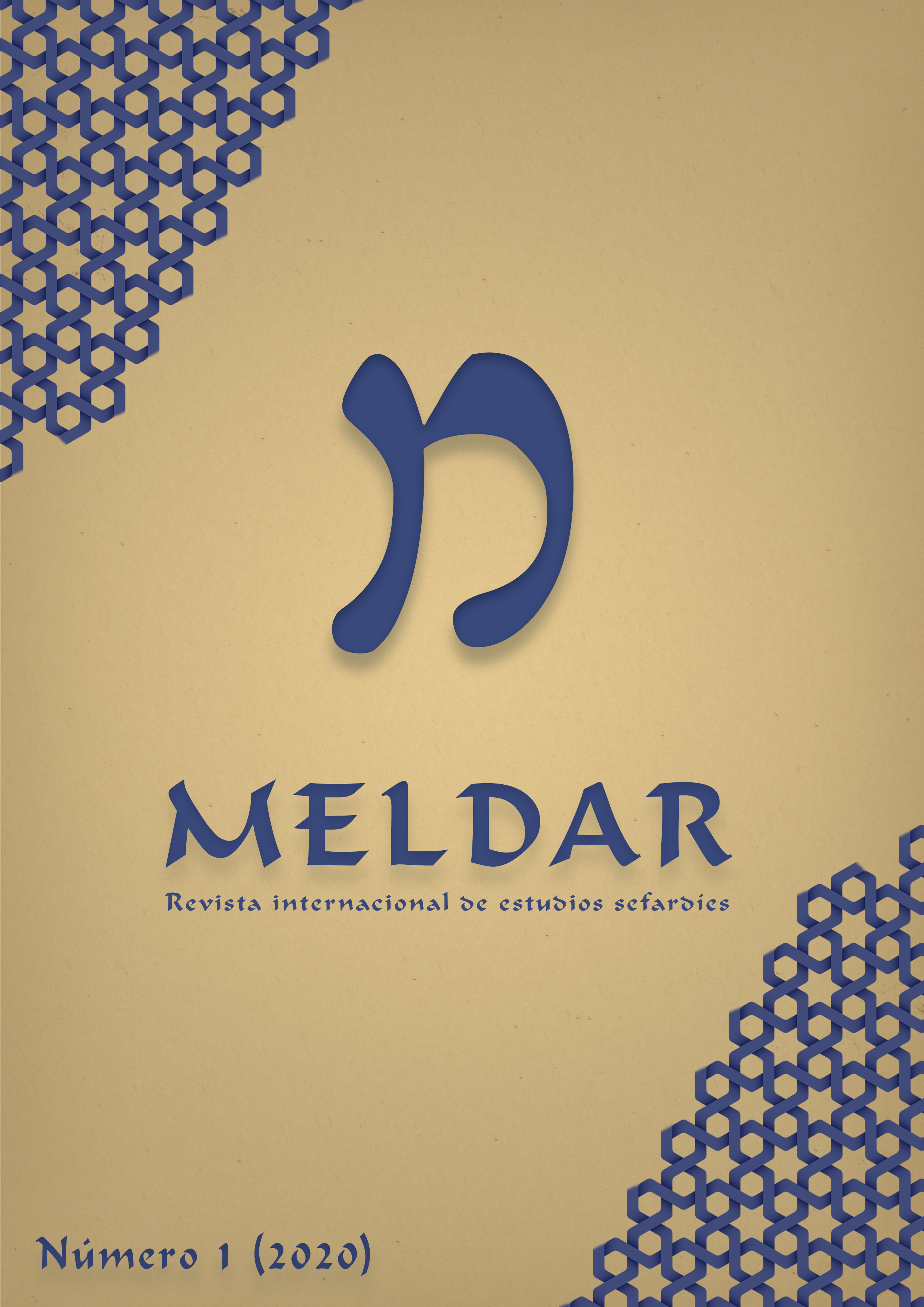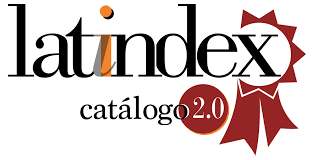The Sephardi origin of the Challah braided bread
DOI:
https://doi.org/10.46661/meldar.5275Palabras clave:
alimentación, historia de España, jalá, judíos, sefardí, askenazíResumen
This article will challenge the assumption that the challah bread is not of Ashkenazi origin but instead of Sephardic origin. It claims to uncover the place of challah bread in history through a historiographical analysis, followed by a study of old sources that mentions it – even including the first recipe – thus, bringing down the previously established postulates. This article also purports to offering an explanation on the link between Ashkenazi and challah bread, which has made it the paragon – alongside the gefiltefish – of the Jewish cuisine from Eastern Europe.
Descargas
Citas
Astaire, Libi. (2017). The History of Challah. Retrieved from A taste of challah: http://atasteofchallah.com/wp-content/uploads/2015/07/FF-437-The-History-of-Challah-by-Libi-Astaire.pdf [consulted in Oct. 2020].
Borgolotto, Elisabeth. (2005). Juifs provençaux et Juifs français dans les sources florentines au 15e siècle. In Danielle Iancu-Agou (Dir.), L’expulsion des Juifs de Provence et de l’Europe méditerranéenne (XVe XVIe). Exils et conversions (pp. 141-142). Paris-Louvain: Peeters.
Bresc, Henri. (2005). L’expulsion des Juifs de Sicile. In Danielle Iancu-Agou (Dir.), L’expulsion des Juifs de Provence et de l’Europe méditerranéenne (XVe-XVIe). Exils et conversions (p. 59). Paris-Louvain: Peeters.
Bressel, Jonathan. (2017). Treasure of Shabbat: An Illuminated Guide to the Shabbat Table Experience. New York: Ktav Publishing House.
Cooper, John. (1936). Eat and Be Satisfied: A social History of Jewish Food. Northvale: Bloch.
Fass, Jonathan. (2012). Challah: a richly fascinating history. Jewish Herald Voice (08/03/2012). Retreived from https://jhvonline.com/challah-a-richly-fascinating-history-p12674-220.htm [consulted in Oct. 2020].
Friedman, David. (n.d.). An Anonymous Andalusian Cookbook of the 13th Century, Translated by Charles Perry. Retrieved from http://www.daviddfriedman.com/Medieval/Cookbooks/Andalusian/andalusian4.htm#Heading153 [consulted in Oct. 2020].
Garvin, Barbara & Cooperman, Bernard (Eds.). (2000). The Jews of Italy: Memory And Identity. Studies and Texts in Jewish History and Culture. Bethesda: University Press of Maryland.
Glezer, Maggie. (2004). A Blessing of Bread: The Many Rich Traditions of Jewish Bread Baking around the World. New York: Artisan.
Guetta, Alessandro. (2014). Italian Jewry in the Early Modern Era: Essays in Intellectual History. Boston: Academic Studies Press.
Jewish Bible with Rashi’s commentary. (n.d.). English translation of the entire Tanakh (Tanach) with Rashi’s commentary [edited by esteemed translator and scholar Rabbi A. J. Rosenberg]. Retrieved from https://www.chabad.org/library/bible_cdo/aid/63255/jewish/The-Bible-with-Rashi.htm [consulted in Oct. 2020].
Koening, Leah. (2019). The Jewish Cookbook. New York: Phaidon.
Levy, Esther. (1871). Jewish Cookery Book: On Principles of Economy, Adapted for Jewish Housekeapers, with the Addition of Many Useful Medicinal Recipes, and Other Valuable Information, Relative to Housekeeping and Domestic Management. Philadelphia: W.S. Turner.
Levy, Esther. ([reed.] 2012). Jewish Cookery Book: On Principles of Economy. Kansas City: Andrews McMeel Publishing.
Marks, Gil. (2010). Encyclopedia of Jewish Food. New Jersey: Hoboken.
Moskin, Julia. (2015). A Twist on the Traditional Challah. Retrieved from The New York Times: https://www.nytimes.com/2015/12/02/dining/challah-recipe-history.html [consulted in Oct. 2020].
Online Etymology Dictionary. (n.d). Challah. Retrieved from https://www.etymonline.com/word/challah [consulted in Oct. 2020].
Ottolenghi, Yotam. (2012). Jerusalem. Paris: Hachette cuisine.
Patai, Raphael. (2015). Encyclopedia of Jewish Folklore and Traditions. Abingdon: Routledge.
Pinson, Rochie. (2017). The Settlement Cookbook; Rising: The Book of Challah: Recipes for Challah & Life from Rebbetzin Rochie's Kitchen. New York: Iyyun Publishing.
Reider, Freda. (1987). The Hallah Book. New York: Ktav Publishing House.
Roden, Claudia. (1999). The Book of Jewish Food: An Odyssey from Samarkand and Vilna to the Present Day. Londres: Penguin.
Roden, Claudia. (2012). Le livre de la cuisine juive. Paris: Flammarion.
Safra, Edmond (Ed.). (2017). Houmach. New York: ArtScroll series.
Sarna, Shannon. (2017). Modern Jewish Baker: Challah, Babka, Bagels & More. Woodstock: Countryman Press.
Segre, Renata. (2005). L’expulsion des Juifs des Marches. In Danielle. Iancu-Agou (Dir.), L’expulsion des Juifs de Provence et de l’Europe méditerranéenne (XVe-XVIe). Exils et conversions (p. 89). Paris-Louvain: Peeters.
Siegel, Richard, Strassfeld, Michael & Strassf, Sharon. (1973). The Jewish Catalog: A Do-it-yourself Kit. Philadelphia: Jewish Publication Society of America.
Weishouse, Zahava. (2019). Jewish Ashkenazi Gastronomy in Northern Italy in the Early Modern Period: The Testimony of the Book Mitzvot Hanashim. In Yaron Harel & Mauro Perani (Dirs.), The Jews in Italy: Their Contribution to the Development and Diffusion of Jewish Heritage (pp. 228-247). Boston: Academic Studies Press.
The Straight Dope. (1999). What's the origin of the Jewish bread “challah”? The Straight Dope (28-05-1999). Retrieved from https://www.straightdope.com/columns/read/1645/whats-the-origin-of-the-jewish-bread-challah [consulted in Oct. 2020].
Winston-Macauley, Marnie. (2012). A Brief History of Challah. Retrieved from Aish: https://www.aish.com/j/f/A_Brief_History_of_Challah.html [consulted in Oct. 2020].
Zimmels, Hirsh. (1996). Ashkenazim and Sephardim: Their Relations, Differences, and Problems as Reflected in the Rabbinical Responsa. New York: Ktav Publishing House.
Descargas
Publicado
Cómo citar
Número
Sección
Licencia
Derechos de autor 2020 Meldar: Revista internacional de estudios sefardíes

Esta obra está bajo una licencia internacional Creative Commons Atribución-NoComercial 4.0.
Las obras se publican en la edición electrónica de la revista bajo una licencia Creative Commons Reconocimiento-NoComercial-4.0 Internacional: se pueden copiar, usar, difundir, transmitir y exponer públicamente, siempre que:
- Se cite la autoría y la fuente original de su publicación (revista, editorial y URL de la obra).
- No se usen para fines comerciales.
- Se mencione la existencia y especificaciones de esta licencia de uso.




 @meldar__
@meldar__


